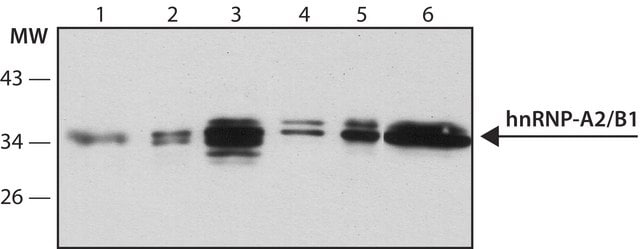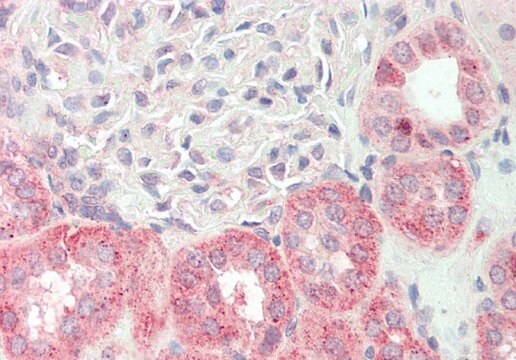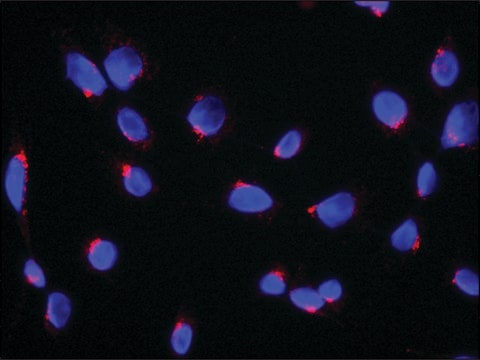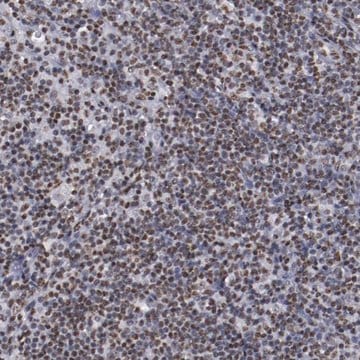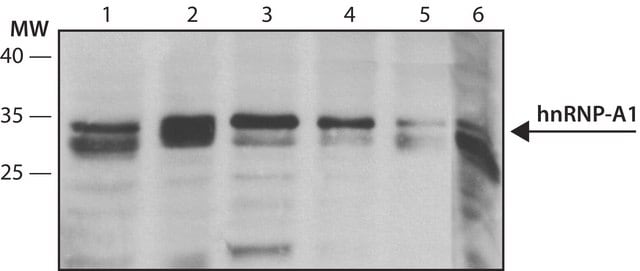R4528
Anti-hnRNP-A1 antibody, Mouse monoclonal
clone 9H10, purified from hybridoma cell culture
Synonim(y):
Anti-heterogeneous nuclear ribonucleoprotein-A1
About This Item
Polecane produkty
pochodzenie biologiczne
mouse
białko sprzężone
unconjugated
forma przeciwciała
purified immunoglobulin
rodzaj przeciwciała
primary antibodies
klon
9H10, monoclonal
Postać
buffered aqueous solution
masa cząsteczkowa
antigen ~34 kDa
reaktywność gatunkowa
human, hamster, monkey, rat, bovine, mouse, canine
metody
immunocytochemistry: suitable
immunohistochemistry: suitable
immunoprecipitation (IP): suitable
microarray: suitable
western blot: 0.5-1.0 μg/mL using total cell extract of 293T cells
izotyp
IgG2b
numer dostępu UniProt
Warunki transportu
dry ice
temp. przechowywania
−20°C
docelowa modyfikacja potranslacyjna
unmodified
informacje o genach
human ... HNRNPA1(3178)
mouse ... Hnrnpa1(15382)
rat ... Hnrnpa1(29578)
Powiązane kategorie
Opis ogólny
Immunogen
Zastosowanie
Does not immunoprecipitate the hnRNP complex.
Działania biochem./fizjol.
Postać fizyczna
Oświadczenie o zrzeczeniu się odpowiedzialności
Not finding the right product?
Try our Narzędzie selektora produktów.
Kod klasy składowania
12 - Non Combustible Liquids
Klasa zagrożenia wodnego (WGK)
nwg
Temperatura zapłonu (°F)
Not applicable
Temperatura zapłonu (°C)
Not applicable
Certyfikaty analizy (CoA)
Poszukaj Certyfikaty analizy (CoA), wpisując numer partii/serii produktów. Numery serii i partii można znaleźć na etykiecie produktu po słowach „seria” lub „partia”.
Masz już ten produkt?
Dokumenty związane z niedawno zakupionymi produktami zostały zamieszczone w Bibliotece dokumentów.
Nasz zespół naukowców ma doświadczenie we wszystkich obszarach badań, w tym w naukach przyrodniczych, materiałoznawstwie, syntezie chemicznej, chromatografii, analityce i wielu innych dziedzinach.
Skontaktuj się z zespołem ds. pomocy technicznej
